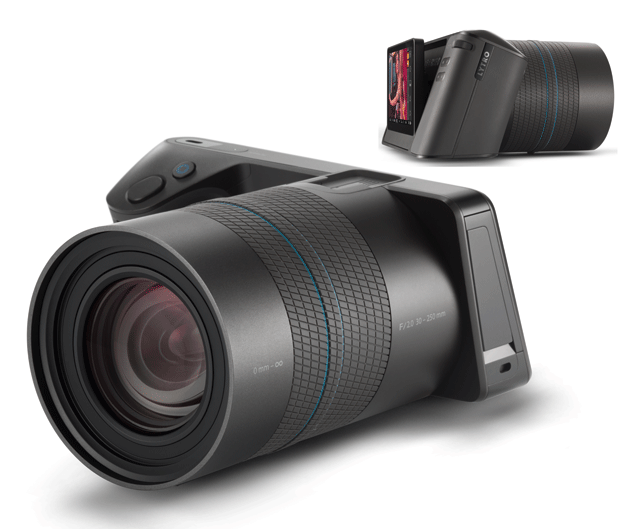Light fantastic
Having released its first light field camera two years ago, Lytro has advanced its offering with this game-changing device, the Illum.

The Lytro Illum
The hardware is familiar to all as a camera, with a stout body, lens and zoom ring, yet the angled touchscreen (leaning forward at 20 degrees) imparts natural ergonomics to a camera of this size.
The slanted architecture allows the user to hold the camera below eye-level, for a natural downward gaze and bringing the arms naturally against the body.
Yet it is what’s on the inside that makes the Illum an unprecedented marvel.
The light field photography technology it uses captures the colour, intensity and direction of every light ray flowing into the camera’s 40-megaray sensor.
Photos can become dynamic when viewed through the Lytro app on a tablet allowing you to refocus the photo as you navigate the screen – enabling you to refocus on a shot or add depth of field.
For designers this potentially gives it another use more suited to its mammoth data capture capabilities – adding extra zing to product renderings.
Should the visualisation software vendors support the format, the multiple dimensions and depth of field data from the images should allow perspective formatting to be included in renderings.
Use of the image data post capture is what the Illum is all about. With traditional photo-editing already catered for, we expect to see some exciting uses for it in the near future for 3D capabilities.
lytro.com
Economical eagle-eye
This darling slice of exposed PCB board is in fact one of this year’s must have cameras: Pixy, the fifth CMUcam invented at Carnegie Mellon University’s Robotics Institute.

All the software and firmware of the Pixy camera is open source and GPL licensed
CMUcam is a low-cost vision system intended for hobbyist and educational use, but as with the Arduino and Raspberry Pi computers, designers and engineers are finding uses them for them in developing new products.
There are two drawbacks with traditional image sensors: they output lots of data per second, and processing this can overwhelm many processors, taking processing power away from other tasks.
Pixy addresses these problems by pairing a powerful dedicated processor with the image sensor, sending only the useful information (purple dinosaur detected at x=54, y=103’) to the microcontroller at a fast 50fps.
You can quickly ‘teach’ Pixy to find objects, connecting directly to an Arduino or other controller.
Able to pick out colours and shapes (purple dinosaurs are a favourite) it has the possibilities to run other algorithms: a QR code decoder, a face detector, an interactive pointing device or anything you can create.
Pixy was designed using OrCAD for its PCB layout. An open source design, the schematics and BOMs are all available, with 3D CAD models available to download from GrabCAD.
charmedlabs.com
Movie Magic
Motion capture technology has seen real world movement filter seamlessly into the ever-expanding digital realm, with the camera technology becoming highly sophisticated.
Vicon’s T-Seroes cameras offer the highest resolution and precision available
Skintight suits sprinkled with ping-pong balls are still needed, but the camera technology has continued to move at a pace, with Vicon’s T-Series camera being at the leading edge.
Used in a rig that can scale from eight up to 100 cameras, the T-Series’ strobes give an even spread of light across the capture volume, which means the cameras are less susceptible to uncontrollable ambient lighting. This allows the T-Series to be used in a studio or outdoors.
The sensors, lenses and on-board camera processing have all been custom designed for the T-Series and the motion capture market.
Originally outsourcing its product design needs to an agency, Vicon soon realised that the process could be streamlined with a product design team in-house.
Its new design process quickly darts from sketching concepts into SolidWorks. Using its Keyshot plug-in and the VR package, they can produce 3D rotatable renders for group feedback.
The ability to design iterations fast in 3D CAD means potential pitfalls can be spotted earlier, while the important electrical design can be fine tuned to fit the model using OrCAD.
vicon.com
Three photgraphic devices set to revolutionise design and prototyping
Default






